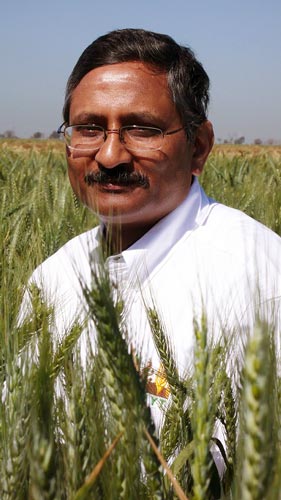 Innovative techniques in wheat breeding are necessary to meet the increasing population demand and overcome environmental challenges, said CIMMYT Wheat Breeder, Ravi Singh, at the annual meeting of the American Association for the Advancement of Science (AAAS) on 18 February 2012.
Innovative techniques in wheat breeding are necessary to meet the increasing population demand and overcome environmental challenges, said CIMMYT Wheat Breeder, Ravi Singh, at the annual meeting of the American Association for the Advancement of Science (AAAS) on 18 February 2012.
Wheat currently provides approximately 20% of the world’s calories, and 20% of the total protein intake in the developing world, but yields will need to increase by 1 ton per hectare by 2020 to keep pace with the growing global population, according to Singh. This is a great challenge, considering the anticipated negative effects of rising global temperatures and the risks posed by highly-virulent new pathogens such as Ug99.
A strain of the causal fungus of wheat stem rust disease that first appeared in Uganda in 1998, Ug99 has since been detected in several countries of eastern and southern Africa, overcoming previously resistant wheat varieties there, and researchers fear its spread to the major bread baskets of northern Africa, Asia, and Europe. In 2005, the world’s leading wheat researchers established the Durable Rust Resistance in Wheat (DRRW) project, administered by Cornell’s College of Agriculture and Life Science. Through this project, CIMMYT and a global cadre of researchers are developing new varieties of wheat that both resist Ug99 and also produce higher yields.
Through breeding sequentially at two diverse locations in Mexico and screening promising wheat lines at a Ug99 hot spot in Kenya, researchers have been able to develop more than 20 Ug99-resistant lines, now present in varieties released or in advanced trials in eight countries, including India and Pakistan. Singh’s symposium, entitled “Emerging Risks in the Global Food System,” focused on the progress and challenges to global food security presented by Ug99. “We have made great strides in identifying new varieties that will provide durable resistance to stem rusts and increase yields,” said Singh, “but there is still much work to be done because of the importance of wheat and the ever-changing pressures it faces globally.”